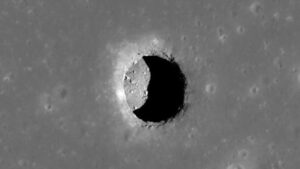The NASA spacecraft Juno left Earth in 2011. After a five-year flight, it entered Jupiter’s orbit. The space agency has just released several critical findings from Juno, which has just finished its 38th swab around Jupiter and its several moons.
In the document, NASA supplies hyper-detailed photos, electromagnetic samples, and audio derived from our solar system’s largest moon, Ganymede.
Best auroras in the solar system

Jupiter’s main dust ring as seen from Juno, including arms of the Perseus Constellation (annotated by NASA). Image: NASA/JPL-Caltech
Scientists compiled photographs from Jupiter’s atmosphere, including remarkable shots from behind the planet’s iconic ring.
Jupiter’s outer layers contain gases and liquids, and the cloudy curtain that we recognize as Jupiter’s surface includes a layer of liquid metallic hydrogen.
According to NASA’s Jet Propulsion Lab (JPL), the massive metallic hydrogen environment forms Jupiter’s magnetosphere. In turn, it traps plasma, an electrically charged gas.
“This powerful magnetic environment creates the brightest auroras in our solar system, as charged particles precipitate down into the planet’s atmosphere,” the JPL said.
The soundtrack of Ganymede

Left to right: The mosaic and geologic maps of Jupiter’s moon Ganymede with imagery from NASA’s Voyager 1 and 2 spacecraft and NASA’s Galileo spacecraft. Images: USGS Astrogeology Science Center/Wheaton/NASA/JPL-Caltech
Juno’s latest orbit included some runs past Jupiter’s moons. In June 2021, Juno flew by Ganymede and collected radio emission data which scientists then converted to audible frequencies. The result is a 50-second audio sample of Jupiter’s magnetic atmospheric activity.
“If you listen closely, you can hear the abrupt change to higher frequencies around the midpoint of the recording,” Scott Bolton, Juno’s principal investigator, explained. The frequency change “represents entry into a different region in Ganymede’s magnetosphere.”
Juno’s Waves instrument makes it possible to collect the radio frequencies inside the magnetosphere. Ganymede does not actually emit sounds, which do not exist in the vacuum of space.

A close-up of Jupiter’s colorful but inhospitable surface. Image: Thomas Thomopoulos/NASA/JPL-Caltech/SwRI/MSSS
Juno’s mission
Though it’s the eighth craft to reach Jupiter, Juno is monumental in that it’s the only spacecraft capable of tolerating the gas giant’s hectic, radioactive atmosphere. Its latest pass provides a wealth of information that supports the mission’s primary objective: a better understanding of planetary evolution and the formation of our solar system.
For more information on the Juno mission, head to nasa.gov/missions.






